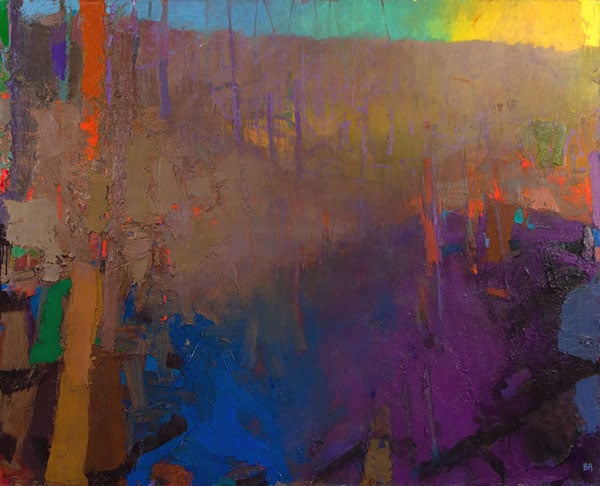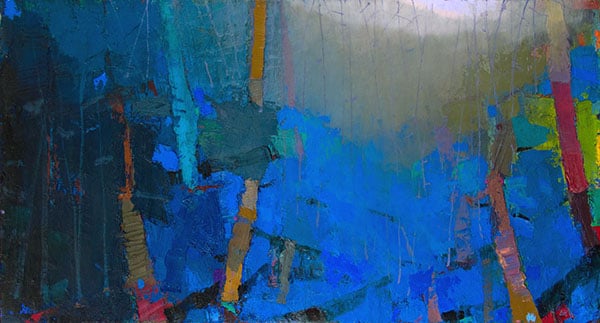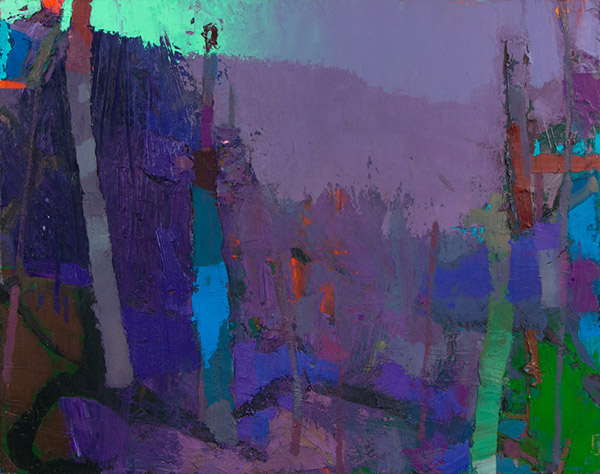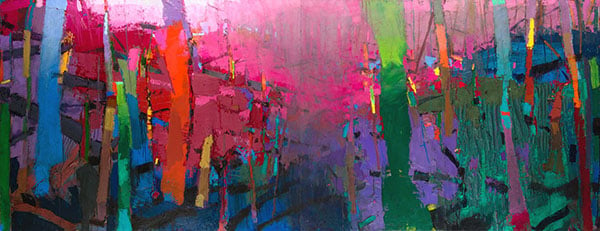Art & Exhibitions
artnet Asks: Painter-Magician Brian Rutenberg
Who doesn't love magic and barbecue?

Who doesn't love magic and barbecue?

Artnet News


Brian Rutenberg, Sea Glass (2015). Courtesy of Jerald Melberg Gallery.
Painter Brian Rutenberg says that in another life, he’d be a magician—but in so many ways, he already is. His paintings are full of secret marvels and sleights of the hand that dazzle you with their bright palette and their effortless grace. His latest show, “Camelia,” is currently on view at Jerald Melberg Gallery in Charlotte, North Carolina through January 2, 2016. A consummate storyteller, Rutenberg shares the tale of his colorful Southern childhood with artnet News, and how he became the painter he is today.
When did you know you wanted to be an artist?
Humidity made me a painter. I was raised in the mind-numbing heat of the South Carolina Lowcountry. When I was nine, my mother took me to Charleston to have my portrait done by Alicia Rhett, a well-known pastel artist who did some acting on the side—she played opposite Olivia D’Havillande as Melanie Wilkes’ sister India in a little film called Gone with the Wind. For several consecutive Saturdays, I sat on a licorice-black stool in the parlor of her antebellum carriage house, which smelled of furniture polish and soup. The sound of pastel rubbing against cream Fabriano Tiziano lulled me into a trance. I asked many questions. On the right side of her easel was an antique table bearing the tools of work; stumps in porcelain teacups, pale chamois skins, blending tortillions, and pastels lined up neat as a diamondback’s markings. What kind of work is this, I wondered. My father sits in a room full of law books, his father sat in the same room in different zip code. What is an artist’s role in the world?
For the first time I realized that there was a subspecies of human beings who roam the earth, able to see that which is hidden in plain sight. I sensed the comforting murmur of family—not that of my parents and brothers, but a subtler music. Being an artist is familial. I watched as she transformed a few crumbs of cobalt blue into my right eye, it looked as wet and blue as the real thing, more so. Instinctively, I reached out and touched it with my index finger, smearing the iris that took hours to craft. She must have wanted to hit me with a polo mallet but I’ve never forgotten what she said: “You’re going to be an artist Brian, I’m certain of it.”

Brian Rutenberg, Wax Myrtle (2015). Courtesy of Jerald Melberg Gallery.
Where do you find inspiration for your work?
After 40 years of painting I no longer rely on inspiration—it is undependable. The only thing an artist can depend on is consistent, repetitive work. Steve Martin said, “it’s easy to be great; it’s hard to be good.” When I get stuck or don’t feel like painting (which happens), I simply keep working because a painter makes paintings. With that said, my creative process is tethered to the place I come from, the coast of South Carolina. I’ve never needed a position because I have a place. This has nothing to do with memory; it is much broader than nostalgia. I want to discover a place and craft it at the same time. The South Carolina Lowcountry taught me how to construct my clear-seeing place. Every artist needs a clear-seeing place, and all that’s required is a door and a lock. I can’t overstate the importance of solitude for creativity.
Tell us about your new show, “Camelia.”
It is important that my paintings relate to things in the real world, things that I understand and can hold in my hands. When I was a child, my mother would place clear bowls of pink camellia blossoms floating in water on my bedside table every spring. I’d watch them drift and spin for hours as my eyelids grew heavy. Southern children are taught to drink in the wondrous details of the local landscape: a flower isn’t just a flower but a blue water hyssop or a southern marsh canna, birds are black-bellied whistling ducks or red-footed boobies, barbecue sauce is light tomato, heavy tomato, mustard, or vinegar. Poetry lives in details and the artist’s job is to magnify them. This new body of work is titled “Camellia” because my paintings always begin and end in the local. All of the content is on the tip of the brush because there isn’t room there for anything else.

Brian Rutenberg, Vanish (2014–15). Courtesy of Jerald Melberg Gallery.
What is the best show you have seen in the past year?
“Navigating the West: George Caleb Bingham and the River” at the Metropolitan Museum of Art. Bingham’s river paintings embody slow seeing and slow thinking. If there is one thing the world needs more of, it is anti-speed. I want my paintings to be the intensification of slowness, but I can’t quite do it yet, so I study those who can. Suzan Frecon can.
Who are some of your favorite artists and why?
Thomas Gainsborough for his unorthodox mixing of materials (charcoal, oil paint, varnish, pencil) and command of artifice. Will Barnet for his visual acumen and disinterest in trends. Gregory Amenoff and John Raimondi for their ability to make images of clear power and pathos. Susanna Coffey for her touch and tonal sense. William-Adophe Bouguereau for inventing colors that I can’t even describe. Tom Thomson because he referred to himself as “artist, woodsman, and guide.”
If you could own any artwork, what would it be and why?
Tommaso di Folco Portinari & Maria Portinari (1470), by Hans Memling. This painting shows me what the role of an artist is in the world. Art creates an excuse for us to look at each other. I love that Memling paints the illusion of a window to frame the figures, with soft shadows suggesting they sit at the interface between our world and the realm of the eternal. With their fingertips barely touching, the man and woman in the painting embody the singularity of the devotional act.

Brian Rutenberg, Camellia (2014–15). Courtesy of Jerald Melberg Gallery.
What are some things you enjoy doing when you’re not making art?
Magic and barbeque. I love carnivals and state fairs, especially when they have side shows. I like magic because it compresses and accelerates time: it is a high speed collision between what we know and what we actually see. I never want to know the method, I love to be fooled.
If you weren’t an artist, what do you think you would be doing?
I’d be a stage magician. I love the idea of practicing something for decades and getting really good. I’ve always admired repetitive jobs like lounge singers, traveling salesmen, or birthday party magicians because they’ve done the exact same gig for so long that their delivery is effortless. Redundancy has great poetic potential. The art market pressures artists to constantly grow and develop but there is great beauty in repetition, no one talks about that. I’ve had two retrospectives and they gave me the opportunity to see broad, 20-year snapshots of my work. I really only have a couple of moves but I do them very, very well. Extracting poetry from limitations is far richer than trying to dazzle everyone all the time.